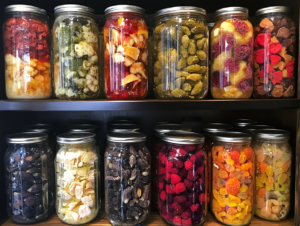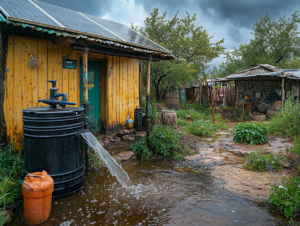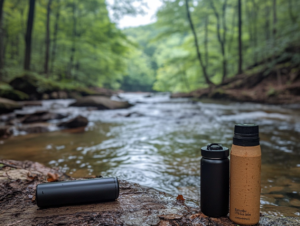
Introduction
In a world where self-sufficiency is becoming increasingly vital, preppers are turning to innovative methods to ensure food security. Hydroponics and aquaponics offer sustainable solutions for food production, even when you’re off the grid. But which method is the best for preppers?
Get more survival tips – Subscribe to My Prepper Supply Newsletter!
Understanding Hydroponics and Aquaponics
Both hydroponics and aquaponics use soilless farming techniques, but they differ in methods and benefits.
What is Hydroponics?
Hydroponics involves growing plants in nutrient-rich water solutions without soil. The roots are submerged in or misted with a water-based nutrient solution, and plants are often supported by an inert medium like perlite or clay pellets.
Benefits of Hydroponics:
- Faster plant growth
- Uses up to 90% less water than traditional farming
- Can be set up indoors in small spaces
- Minimal pesticide use
What is Aquaponics?
Aquaponics combines hydroponics with aquaculture. Fish and plants grow together in one integrated system. The fish waste provides an organic nutrient source for the plants, and the plants help purify the water for the fish.
Benefits of Aquaponics:
- Closed-loop system, highly sustainable
- Produces both plant and protein (fish)
- Reduced waste through natural ecosystems
- Less reliance on chemical fertilizers
Hydroponics vs. Aquaponics: Which is Best?
Space and Location
Hydroponics: Ideal for limited spaces and urban settings; flexible setup (vertical or horizontal systems).
Aquaponics: Requires more space due to aquaculture tanks; suitable for backyard settings or larger areas.
System Complexity
Hydroponics: More straightforward setup with fewer components; easier maintenance and troubleshooting.
Aquaponics: More complex due to integration of fish and plants; requires balanced aquaculture management.
Cost Considerations
Hydroponics: Initial setup costs can be lower; ongoing nutrient solution expenses.
Aquaponics: Higher initial investment due to fish tanks and pumps; dual harvest potential (vegetables and fish).
Environmental Impact
Hydroponics: Closed system minimizes water waste; requires synthetic nutrient solutions.
Aquaponics: Natural waste recycling with minimal environmental footprint; biodiverse ecosystem creation.

How to Decide: Key Considerations for Preppers
- Space Available: Consider your living situation and available space for setup.
- Resources: Evaluate your access to initial investment and ongoing resources.
- Climate: Choose a system based on your local climate conditions.
- Food Needs: Decide between priorities for vegetable or dual production (vegetable and fish).
Making the Most of Your System
Hydroponics Tips
- Regularly test and adjust nutrient solutions.
- Ensure proper lighting for indoor systems.
Aquaponics Tips
- Maintain a balanced fish-to-plant ratio.
- Monitor water quality and fish health diligently.

Conclusion
Both hydroponics and aquaponics offer unique advantages for preppers seeking sustainable food production. Your choice depends on available space, resources, and personal preferences. By investing in either system, you’re taking a significant step toward enhanced self-sufficiency and resilience.
Ready to start growing your own food? Visit My Prepper Supply for all your prepping needs!